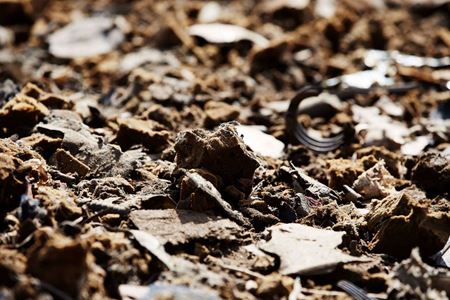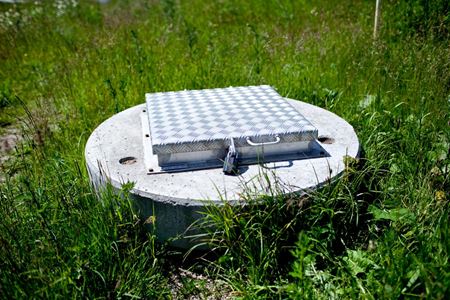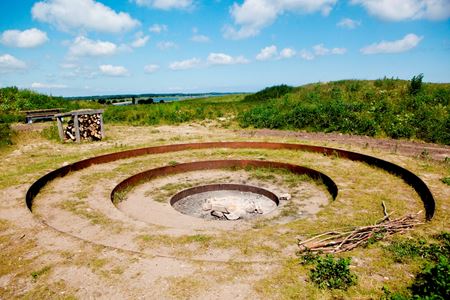In order to reduce the environmental impact on the coastal waters surrounding Stige Island, environmental protection measures were required. Therefore a system for collection of leachate was established in 2003. It is integrated with a monitoring system designed to ensure that at least 58 % of the nitrogen contents is recovered - a target set by the local supervising authority, Funen County. Besides the leacthate collection system also gas is being collected from the landfill.
Collection of leacthate
A drainage system is encircling the old landfill and a unique monitoring system involving new innovative technologies has been designed. The monitoring system comprises an infiltration control system. It enables modelling of the water in order to calculate the amount of nitrogen leakage. One of the keystones in the monitoring system is the infiltration control system. This system is unique, and it comprises the location of lysiometres and Time Domain Reflexion (TDR)-probes, to account for variations in rainfall, vegetation, soil composition, ground slope and orientation.
Collection of drainage water
During the closure of Stige Island, a system has been established for collecting, monitoring and discharging surface water at the landfill. This is to ensure that any polluted surface water cannot leave the landfill in an uncontrolled fashion. The pure surface water is discharged to Odense Fjord. If surface water from an area of the landfill is found to be polluted, it is transferred directly to the leachate collecting system.
Gas extraction at Stige Island
The former landfill, Stige Island, has the largest dump gas plant in Denmark. The gas formed from the biological processes that take place in dumped refuse is collected via vertical boreholes in the island. The gas provides electricity and district heating in Odense via a combined heat and power plant.
Electricity and heat for households in Odense
The amount of gas will continiously decrease as the waste is decomposing. Annual production in 2012 accounted for around 3,500,000 m3 of dump gas, yielding 4,900,000 kWh of electricity and 4,350,000 kWh of heat. This covers the annual electricity requirements of approximately 2,300 households and the annual heat requirements of nearly 400 households.
25 km of suction pipes
The gas is collected via 160 vertical gas extraction wells at Stige Island and 20 vertical and 10 horizontal gas extraction wells at Odense North Landfill. The total vertical length of the wells is more than 2,000 metres. A suction pipe system measuring 25 km in length links the gas extraction wells to 5 pump modules (4 at Stige Island and 1 at Odense North Landfill), which are each able to pump up a maximum of 1,200 cubic metres of gas from the dump per hour. In the pump module, the gas is compressed to a gauge pressure of 1 bar and is transferred to the custom-built combined heat and power plant over a distance of about 4 km via an underground plastic gas pipeline.
4 gas engines comprising 16 cylinders
The gas is lead to a waste-to-energy plant, where it is burned toghether with municipal solid waste. For emergency situations at the power plant there is a gas engine, which can transform the gas to electricity and district heating. The gas engine has 12 cylinders and a output of 675 kW electricity. The heat from the engine and the exhaustion is used for district heating.



